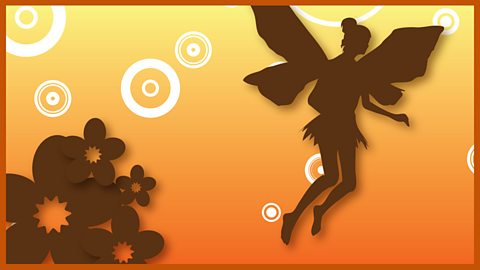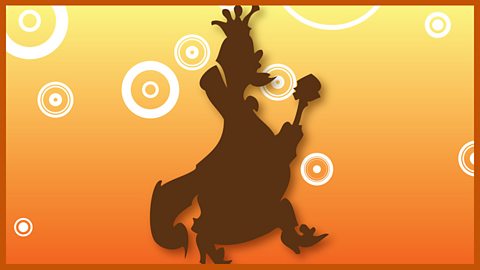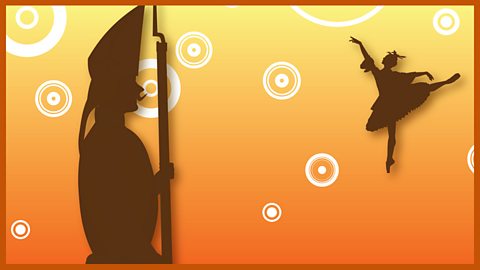A long time ago, in a beautiful world under the sea, there lived mer-people. Merpeople were strange magical creatures with bodies like you and me but long fishÔÇÖs tails instead of legs.Although mer-people were happy in their under-sea kingdom, sometimes, just for fun, they would swim up to the surface and take a look at our world.
Sometimes they would see human beings sail past on their great ships and say, ÔÇśWhat strange lives those humans lead!ÔÇÖ
The king of the mer-people had six mermaid daughters. All were very beautiful, but the loveliest was the youngest. Not only was she beautiful, but the Little Mermaid had the best singing voice of all the mer-people. When the Little Mermaid sang, everyone would stop what they were doing and listen. Even the fishes seemed to swim more slowly as if they too were enjoying her singing.
Mermaids were not allowed to go up to the surface to see the world of human beings until they were fifteen years old, and each sister on her fifteenth birthday swam up to see our world for herself. When they came back they told of huge ships plunging through great storms, of children playing happily on sandy beaches, of white creatures that seemed to fl oat gracefully through the air,and of strange sad music that floated from the towers of tall buildings.
Each time one of her sisters went to the surface, the Little Mermaid would plead with her father to be allowed to go with her.ÔÇśBe patient, little one,ÔÇÖ her father would say. ÔÇśYour turn will come.ÔÇÖ
At last it was the Little MermaidÔÇÖs fifteenth birthday and, towards the end of the day, her father looked at her and said, ÔÇśThe time has come, little one. Come back and tell us what you find.ÔÇÖ The Little Mermaid kissed her father, said goodbye to her five sisters and began the long swim to the surface.
Up and up she swam and it was night time before she came close to the surface. She saw a bright light dancing on the water, then moments later her face burst through the waves into the moonlight.
For the first time the Little Mermaid saw stars shining in the dark night sky and felt the gentle sea winds on her cheeks. She saw a sailing ship lit by hundreds of lanterns and thought that she had never seen anything so beautiful in all her life. She swam closer to the shipÔÇŽand, upon hearing strange music, she just had to find out what creatures made those wonderful sounds.
Looking through a window in the side of the ship, she saw what seemed to be a birthday party and the special guest was a young prince. He stood in the centre of the room and everybody seemed to be smiling at him.
He was the most handsome thing she had ever seen. When he smiled, his eyes seemed to light up the whole room and, by the time the party had ended and the guests had gone to bed, the Little Mermaid had fallen in love.
ÔÇśItÔÇÖs getting late,ÔÇÖ she sighed. ÔÇśI must go back to my father and sisters and tell them what I have seen. But then came a sound which the Little Mermaid had never heard before.
A storm was coming and before long great dark clouds hid the moon. The air around the Little Mermaid started to moveÔÇŽand the calm sea started to heave and moan like a giant waking from a deep sleep.
The PrinceÔÇÖs ship started to lurch and roll in the churning seaÔÇŽand the Little Mermaid could hear terror in the voices of the sailors as they tried to save their ship from the giant waves.
Then suddenly the shipÔÇÖs mast snapped in two. Its deck was smashed to pieces by a giant wave. Sailors were thrown into the sea and the beautiful ship began to sink. The Little Mermaid was not afraid of the storm. She dived into a huge wave and swam down into the darkness and there among the swirling wreckage she saw her princeÔÇŽ lifelessÔÇŽ
The Little Mermaid knew that humans could not live in water. ÔÇśDrowned already?ÔÇÖ said the Little Mermaid. ÔÇśNo. He will not drown. I will not let him drown.ÔÇÖ So she swam to the prince, carried him back up to the surface and held his head up out of the water. He was still too weak to move but at least he was alive. The Little Mermaid swam through the night. By morning the storm had passed andshe saw dry land.
The Little Mermaid saw a white sandy beach and she laid the sleeping prince on the sand in front of a small church. Then she swam to some nearby rocks to see what would happen. The prince opened his eyes and saw a girl coming out of the church.
The girl stared at the prince for a moment then ran back inside to fetch help. People came running. The prince was picked up and gently carried away. The Little Mermaid sighed and swam back to her home under the sea.
When her father and sisters asked her what she had seen, the Little Mermaid said nothing. For days she sat sadly by herself thinking of nothing but the handsome prince. At last she could bear it no longer and told her oldest sister what had happened to her on the night of the storm.
The Little Mermaid looked sadly at her fi shÔÇÖs tail. ÔÇśIf only I was a human,ÔÇÖ she said. ÔÇśDonÔÇÖt be silly,ÔÇÖ said her sister. ÔÇśWe mermaids are much happier than humans. Humans only have short lives, but we can live for three hundred years.ÔÇÖ
ÔÇśI donÔÇÖt care,ÔÇÖ said the Little Mermaid. ÔÇśI would happily give up all my hundreds of years to have just one day as a human.ÔÇÖÔÇśYou must forget all about this prince,ÔÇÖ said the Little MermaidÔÇÖs oldest sister. ÔÇśYou must never speak of him again.ÔÇÖ
But the Little Mermaid could not forget about the prince and, later that night when her father and sisters werenÔÇÖt looking, the Little Mermaid slipped away and went to find the old Sea Witch.
The Sea Witch lived in the darkest, coldest part of the ocean and her house, which was made from the bones of drowned sailors, was guarded by poisonous water snakes.
ÔÇśMadam,ÔÇÖ said the little Mermaid. ÔÇśI have come toÔÇŽ ÔÇśI know why youÔÇÖve come child. You want to lose your fishÔÇÖs tail and marry yourprince,ÔÇÖ said the witch. ÔÇśCan you help me?ÔÇÖ asked the mermaid ÔÇśI can help you,ÔÇÖ said the witch, ÔÇśbut it will hurtÔÇÖ. The Little Mermaid shuddered, ÔÇśJust tell me what I have to do.ÔÇÖ
ÔÇśYou must drink this potion,ÔÇÖ said the witch, ÔÇśand then your tail will turn into human legs, but every step you take on land will be like walking on sharp knives.ÔÇÖ ÔÇśIÔÇÖm not afraid,ÔÇÖ said the Little Mermaid. ÔÇśAnd once you have human legs you can never be a mermaid again,ÔÇÖ said the witch. ÔÇśIf your prince doesnÔÇÖt want you; if he falls in love with someone else, then the day after he marries, you will turn into nothing. Nothing more than bubbles floating on the sea.ÔÇÖ
ÔÇśGive me the potion,ÔÇÖ said the Little Mermaid. The Sea Witch smiled. ÔÇśWait my child. First you must pay me.ÔÇÖ ÔÇśBut I have nothing,ÔÇÖ said the Little Mermaid. ÔÇśHow can I pay?ÔÇÖ ÔÇśIÔÇÖll take your voice,ÔÇÖ said the witch. ÔÇśYour beautiful singing voice. Yes, that should donicely.ÔÇÖ The Little Mermaid looked at the witch and said, ÔÇśVery well. If that is what I must pay, then take it.ÔÇÖ
The witch handed the Little Mermaid the potion in a small bottle and the Little Mermaid spoke no more ÔÇô the witch had taken her tongue. The next day the PrinceÔÇÖs servants found a beautiful young woman lying on the beach near the palace. They helped her inside, and when the young woman walked, she seemed to be in pain, almost as if she was walking on knives.
The servants dressed her in fine clothes, but when they asked her who she was, she said nothing because this was the Little Mermaid who had given her voice to the Sea Witch and who could never speak or sing again.
Everybody agreed that the Little Mermaid was the most beautiful young woman in the whole palace and, although she never spoke, she quickly became the princeÔÇÖs favourite. He never went anywhere without the Little Mermaid at his side.
One day he told her how much he cared for her and for a moment she was so full of happiness that she thought her heart would burst. ÔÇśBut,ÔÇÖ said the Prince, ÔÇśI cannot marry you because I am still searching for my true love.ÔÇÖ
He explained that once he had nearly drowned and that he had been washed ashore and found by a beautiful young girl. He had only seen that girl once but had fallen in love with her and decided that, if he ever found her, he would ask her to marry him.
The Little Mermaid was very sad. She could not tell the prince that it was she who had saved him; that she had given up everything, her tail, her beautiful voice, her family, just to be with him.
One day a king from another land visited the prince. The king brought with him his beautiful daughter and, when the prince saw the kingÔÇÖs daughter, he knew her straight away. This was the girl who had found him on the beach.
She had grown up into a beautiful woman but there was no mistake. He had dreamed of her for years and, now he had found her, he asked her to marry him.
On the day of the wedding the Little Mermaid thought her heart would break. She had lost her prince and when sun rose the next day she would die. She remembered the witchÔÇÖs words. She would turn to nothing; nothing more than bubbles on the sea water.
That night when everyone was asleep the Little Mermaid sat by the shore waiting for the dawn. She knew that this was her last night alive and that soon the sun would rise. Suddenly, from out of the waves, five silvery figures rose up in the moonlight. It was the Little MermaidÔÇÖs sisters.
ÔÇśQuick,ÔÇÖ said the oldest sister. ÔÇśYou can still save yourself. The witch has given us this magic knife. Kill the prince. Plunge the knife into his heart and when his warm blood splashes on your feet they will grow into a tail and you will become a mermaid again. Hurry little sister. The sun is nearly rising.ÔÇÖ
The Little Mermaid took the knife and ran to the princeÔÇÖs bedroom. She looked at him as her slept beside his new wife. One blow with the knife, and then she would be free. How she longed to be once more with her father and her sisters under the sea! Shelooked at the sharp knife. She looked at the prince. She still loved him, so she went to the windowÔÇŽ and threw the knife far out into the sea.
In the morning the prince ordered his servants to search high and low but no sign of the Little Mermaid was ever found. The prince was very sad and would often sit on the beach late at night missing his little friend. And sometimes he would look at the bubbles on the water shining in the moonlight and almost think he saw her face.
Synopsis
Anne-Marie Duff reads an adaptation of 'The Little Mermaid' by Hans Christian Andersen.
The Sea King has six mermaid daughters. The youngest is the most beautiful and has the best singing voice. On her fifteenth birthday, the Little Mermaid is allowed to make her first trip to the surface of the sea. She watches a party taking place on a boat and falls in love with the handsome prince she sees there. A storm comes, the boat is wrecked and the prince seems sure to drown. The Little Mermaid rescues him and leaves him on a nearby beach, where he is found by a girl who fetches help.
The Little Mermaid wishes to become human so that she can see the prince again, even though the life of a human is much shorter than that of a mermaid. She visits a sea witch who provides a potion that will give her legs but at the cost of her beautiful singing voice. Furthermore, every step she takes on her new legs will cause great pain, and should the prince marry someone else, the mermaid will disappear becoming bubbles on the sea surface.
Nonetheless, the Little Mermaid takes the potion and when found on the beach is taken to the palace. The prince enjoys her company but will not marry her as he is waiting to find the girl who rescued him on the beach years before. This girl turns out to be a princess from a neighbouring kingdom.
On the day of the wedding the Little MermaidÔÇÖs sisters appear and give her a knife that they have brought from the sea witch. The mermaid must kill the prince with the knife and allow his blood to drip on her feet. Then she will regain her tail and her singing voice and her painful legs will disappear. But the Little Mermaid cannot bring herself to kill the prince and throws the knife away and disappears. Later, the prince imagines he can see her face when looking at bubbles on the sea.

╠ř
╠ř
Curriculum guidance
Tales of Hans Christian Andersen can be used to target a range of Reading and Writing objectives from the KS2 National Curriculum programme of study for English across Y3 to Y6 in England, Wales and Northern Ireland and Second Level of the Curriculum for Excellence in Scotland. Specific objectives include increasing pupilsÔÇÖ familiarity with a range of texts ÔÇśincluding fairy storiesÔÇÖ and ÔÇÖtraditional storiesÔÇÖ.
Pupils have the opportunity to listen to and read a selection of AndersenÔÇÖs stories - especially adapted for the age group - and respond through a range of speaking and writing activities. Full details of curriculum links and follow up activities are included in the TeachersÔÇÖ Notes.
Some of Hans Christian Andersen's tales have a dark and pessimistic theme. This means that careful selection of texts is required to ensure age-appropriateness. Please see the teachers' notes below for full synopses and suggestions for use in the classroom.

╠ř
╠ř
Background
- The Little Mermaid was first published in 1837 and translated into English in 1872.
- The best-known film adaptation is the Disney version from 1989, featuring songs such as ÔÇśPart of your worldÔÇÖ and ÔÇśUnder the seaÔÇÖ.
- The most famous and popular tourist attraction in Denmark is a statue - ÔÇśThe little mermaidÔÇÖ - set on CopenhagenÔÇÖs waterfront.
Reading / listening comprehension
- Compare the benefits and drawbacks to the Little Mermaid of becoming human ÔÇô what do you think you might have done in her situationÔÇŽand why?
- The mermaid cannot speak to the prince to tell him how it was she that rescued him
- in what other ways might she have been able to convey this message to him? Why do you think she does not use these other ways to communicate?
- Discuss the ending of the story. Why might Andersen have created an unhappy ending in which the Little Mermaid has sacrificed her life for that of the Prince?
- How could the ending be changed to make it happier? Would this make it a better story?
- What are the motives for the sea witch for taking the mermaidÔÇÖs voice?
- Compare and contrast this version with other versions of the story you might have seen or heard. How does the story differ? Why do you think the other versions have these differences?
More from the series Tales of Hans Christian Andersen
1. Thumbelina. audio
Anne-Marie Duff reads an adaptation of 'Thumbelina' by Hans Christian Andersen.

3. The Emperor's New Clothes. audio
Sir Derek Jacobi reads an adaptation of 'The Emperor's new clothes' by Hans Christian Andersen.

4. The Brave Tin Soldier. audio
David Tennant reads an adaptation of 'The brave Tin Soldier' by Hans Christian Andersen.
